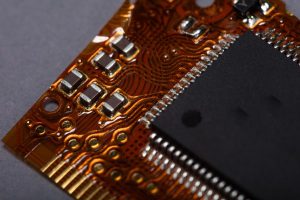Virtually all digital and video cameras use CMOS image sensors. In the past two decades, numerous advances have been made in this type of imaging technology. Now, CMOS image sensors are beginning to be made with superior quality that will provide a large range of new products for military and aerospace users.
Complimentary metal-oxide-semiconductor – CMOS – is a technology for constructing integrated circuits. It’s used in several analog circuits like image sensors (CMOS sensor) and data converters. CMOS is also used in microprocessors, static RAM and other digital logic circuits.
The CMOS image sensor is a semiconductor chip having millions of tiny pixel wells. A pixel well is simply a defined area where photons that strike the sensor pass through silicon and strike a junction, where each photon creates an electrical signal. The electrical signals are read and processed to make the image. (It takes several pixel wells—anywhere from 4 to 81 or more—to make one pixel in the final displayed image.)
There are four key parts within the completed CMOS imaging system:
- The pixel wells along with the interconnects for rows and columns
- Analog-to-digital (A/D) converters to change the analog signal into digital
- Digital signal processing (DSP) circuitry to read the signals coming from the pixel wells
- A screen or other display
In some of the designs now being proposed, the DSP circuitry is part of the metallization on the pixel wells chip.
Recently, a company is Copenhagen introduced two rugged interface type cameras that include 3-CMOS prism-based area scan for use for challenging color imaging applications.
Both feature 3 by CMOS Pregius IMX265 1/1.8-inch sensors with 2048 by 1544 pixels and pixel sizes of 3.45 by 3.45 microns. The cameras have the color space conversion tool with RGB to HSI color space conversion and RGB to CIE-XYZ color space conversion.
The color enhancer tool strengthens the RGB and subtractive cyan, magenta, and yellow hues for uses in medical imaging and microscopy.
These types of cameras will be smaller in size, and use small lenses. For uses in surveillance, for example, it could be feasible to deploy hundreds or even thousands of cameras at multiple locations. They will consist of small pixel array, DSP security, and have a means to transmit the image to a central location.
Universe Optics’ CCD/CMOS precision lens assemblies are ideal for your board and miniature camera applications. Standard lens assemblies are available in 2/3″-1/4″ formats and a wide range of focal lengths.